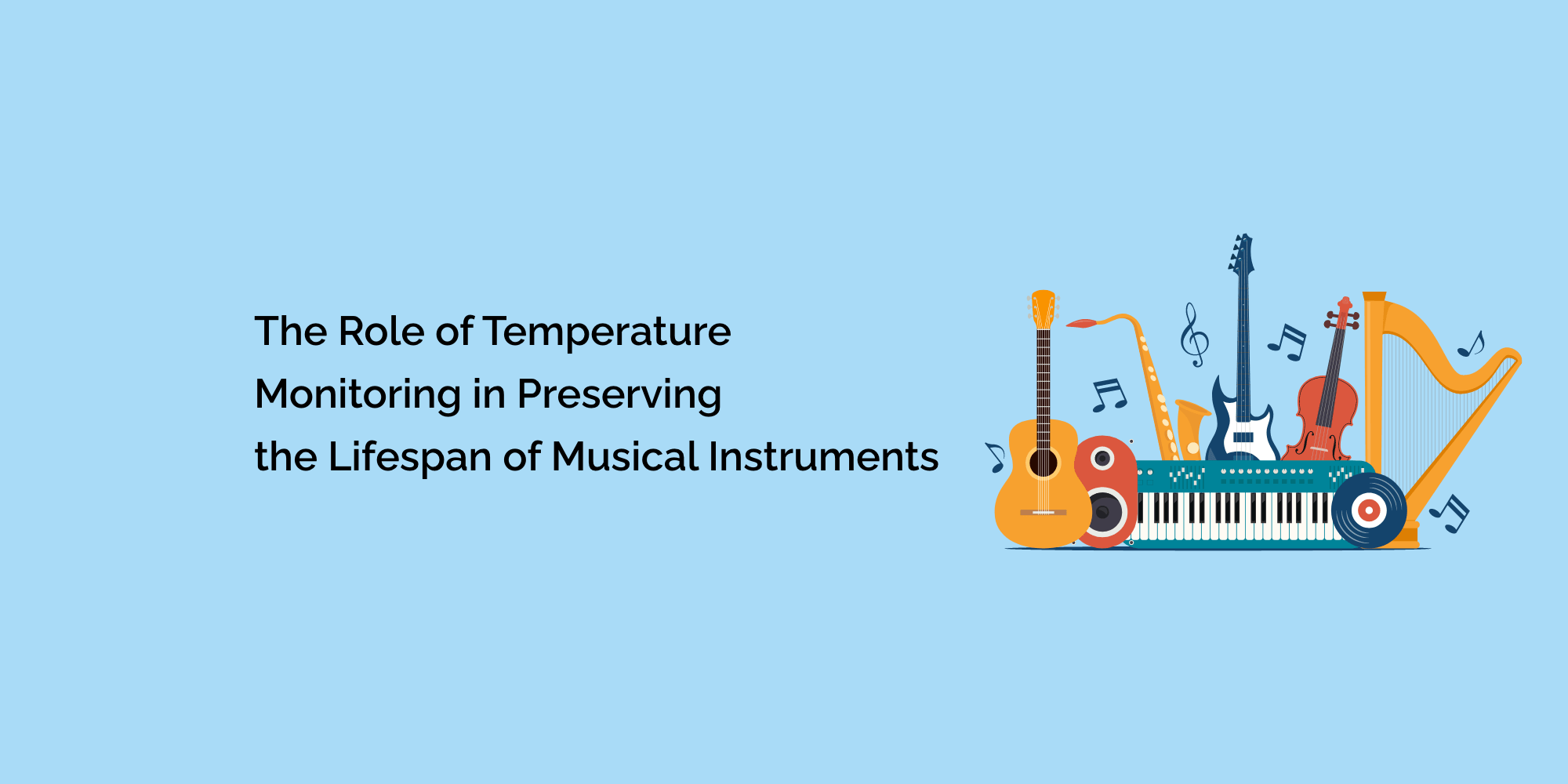Musical instruments are not just objects but works of art that require careful preservation to ensure their longevity and optimal performance. Temperature fluctuations can significantly impact the structural integrity, tonal quality, and overall lifespan of musical instruments. In this comprehensive blog, we will explore the critical role of temperature monitoring in preserving the lifespan of musical instruments. We will discuss the effects of temperature fluctuations on different instrument types, delve into the risks associated with improper temperature control, and provide practical guidance on how temperature monitoring can help protect and extend the lifespan of these valuable instruments.
Understanding the Impact of Temperature on Musical Instruments
Temperature fluctuations can significantly impact musical instruments, as different tools respond differently to temperature changes. Woodwind instruments, brass instruments, string instruments, and pianos all have unique vulnerabilities to temperature fluctuations. Furthermore, temperature changes can affect the materials used in instrument construction, leading to structural issues and tonal changes.
The Risks of Temperature Fluctuations on Musical Instruments
Temperature fluctuations pose risks to musical instruments. Structural damage, such as warping, cracks, or joint failures, can occur due to the expansion and contraction of instrument materials. Temperature changes can also result in tonal inconsistencies, affecting the sound quality and performance of the instrument.
The Importance of Temperature Control for Instrument Lifespan
Maintaining proper temperature control is essential for preserving the lifespan of musical instruments. Consistency and stability in temperature conditions help prevent irreversible damage and minimize the need for costly repairs. By ensuring a suitable temperature range, musicians can extend the lifespan of their instruments and protect their investment.
The Role of Temperature Monitoring in Instrument Preservation
Temperature monitoring plays a critical role in preserving musical instruments. By monitoring temperature levels, musicians and caretakers can detect and address temperature fluctuations early on. This allows them to take proactive measures, such as adjusting storage conditions or implementing temperature control solutions, to maintain optimal instrument conditions.
Types of Temperature Monitoring Devices
Various temperature monitoring devices are available for preserving musical instruments. Traditional thermometers and hygrometers provide essential temperature and humidity readings. Digital temperature sensors and data loggers offer more precise measurements and the ability to log temperature data over time. Wireless monitoring systems provide real-time tracking and remote access to temperature data.
Placement of Temperature Sensors for Accurate Readings
Proper placement of temperature sensors is crucial for accurate temperature readings. Strategic placement in instrument storage spaces, cases, or performance areas ensures monitoring of temperature fluctuations in critical areas. Detectors should be positioned away from direct sunlight, heat sources, or drafts that could affect the accuracy of the readings.
Real-Time Monitoring and Alerts
Real-time temperature monitoring provides continuous tracking and immediate alerts when temperature deviations exceed the desired range. This enables prompt action to rectify the situation and prevent potential damage to instruments. Setting thresholds and receiving temperature alerts enhances temperature control and instrument care.
Integration of Temperature Monitoring with Climate Control Systems
Integrating temperature monitoring with climate control systems enhances temperature regulation for instrument storage spaces. HVAC and automation systems can be linked with temperature monitoring devices to ensure precise control of temperature conditions. This integration creates a stable environment for instrument preservation.
The Role of Instrument Maintenance in Temperature Preservation
Instrument maintenance is essential for temperature preservation. Regular inspections and maintenance routines help identify and address issues affecting the instrument's temperature-sensitive components. Collaborating with instrument technicians and experts ensures proper care and protection of tools.
Educating Musicians on the Importance of Temperature Monitoring
Educating musicians about the importance of temperature monitoring is crucial. By understanding the risks and consequences of temperature fluctuations, musicians can actively participate in preserving their instruments' lifespan. Providing resources, workshops, and educational materials on temperature monitoring enhances musicians' knowledge and awareness.
The Long-Term Benefits of Temperature Monitoring
Implementing temperature monitoring practices brings long-term benefits to musical instruments. It helps prolong the lifespan and value of the tools, preserving their sound quality and performance capabilities. By maintaining optimal temperature conditions, musicians can ensure consistent instrument performance.
Certainly! Here are some frequently asked questions (FAQs) about temperature monitoring and its role in preserving the lifespan of musical instruments:
How can temperature monitoring be integrated with climate control systems?
Temperature monitoring can be integrated with climate control systems, such as HVAC systems, to ensure precise temperature regulation in instrument storage spaces. By linking temperature monitoring devices with these systems, musicians can maintain a stable environment and make necessary adjustments when needed.
How does instrument maintenance complement temperature monitoring?
Instrument maintenance is essential for preserving instruments' lifespan and complements temperature monitoring efforts. Regular inspections and maintenance routines help identify and address issues affecting temperature-sensitive components. Collaborating with instrument technicians and experts ensures proper care and preservation of instruments.
Conclusion
Temperature monitoring plays a vital role in preserving the lifespan of musical instruments. By understanding the impact of temperature fluctuations, implementing proper temperature control measures, and utilizing temperature monitoring devices, musicians can protect their tools and ensure longevity. Consistency and stability in temperature conditions help prevent structural damage, tonal changes, and other issues that could compromise the instrument's performance. By educating musicians on the importance of temperature monitoring and collaborating with instrument technicians and experts, musicians can actively contribute to preserving and protecting their valuable musical instruments for generations to come.








